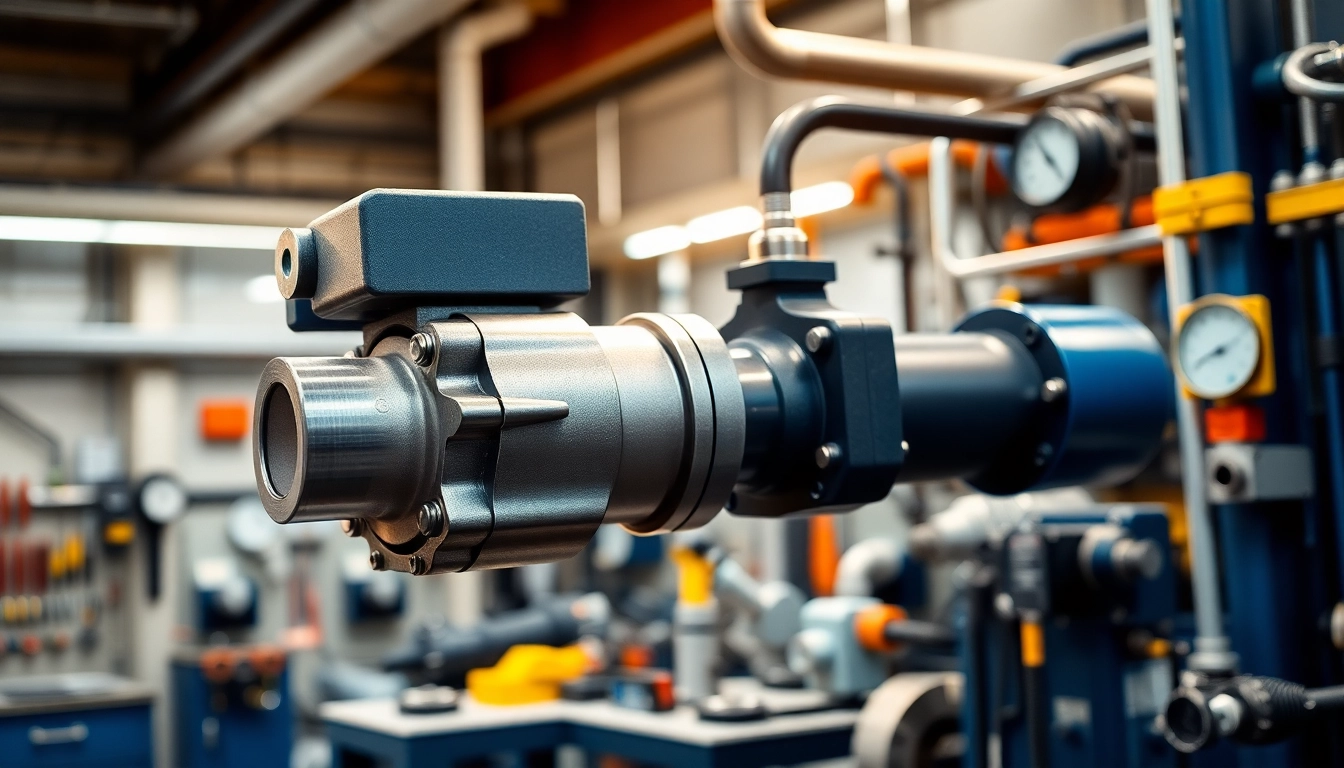Understanding the HM88 Series Manifold Valve
The HM88 Series is a pioneering solution in the realm of manifold valves, primarily used in industrial applications for managing fluid control with precision and reliability. This series, known for its robust design and enhanced functionality, plays a crucial role in linking pressure transmitters to process systems. When exploring options, hm88 provides comprehensive insights into the manifold valve technology that enhances operational efficiency across various sectors.
Overview of Manifold Valve Functionality
Manifold valves serve as critical components in a variety of fluid-handling applications. Their primary function is to consolidate multiple pipe connections into a single, manageable structure. This enables operators to easily redirect flow, isolate instruments, and balance pressure levels, significantly simplifying maintenance and enhancing safety. The HM88 Series, specifically, features a three-valve design that allows for optimal control and monitoring of both pressure and temperature, ensuring seamless operation in demanding conditions.
Key Features of the HM88 Series
- Robust Construction: Crafted from high-grade materials to withstand harsh environments, the HM88 Series offers exceptional durability.
- Enhanced Precision: The unique design minimizes leakage potential, enhancing the accuracy of pressure measurements.
- Easy Integration: Compatible with various pressure transmitter models, facilitating straightforward installation and maintenance.
- Versatile Applications: Ideal for a wide range of industries, from oil and gas to pharmaceutical operations.
Applications in Various Industries
The HM88 Series is not limited to one specific industry; it finds applications across several domains. In the oil and gas sector, these valves are crucial for managing high-pressure systems, ensuring safe and effective operations. In chemical processing, they facilitate precise pressure control, which is essential for maintaining product quality. Moreover, the pharmaceutical industry relies on the HM88 Series for its robust performance and compliance with stringent safety regulations.
Benefits of Choosing the HM88 Series
The decision to implement the HM88 Series manifold valve brings numerous advantages to industrial operations. Understanding these benefits can help businesses optimize their fluid management systems.
Enhanced Performance Metrics
One of the standout aspects of the HM88 Series is its ability to improve overall system performance. By offering precise control over pressure and flow rates, it minimizes the risks of operational downtime caused by equipment failure or inaccurate readings. Enhanced performance translates into more reliable production cycles, giving companies a competitive edge in efficiency and product quality.
Cost Efficiency in Operations
Investing in the HM88 Series can lead to significant cost savings over time. Its durability means fewer replacements, reduced maintenance costs, and minimized downtime. Companies can optimize their operational budgets by relying on a valve system that provides long-term reliability and performance.
Durability and Reliability
The materials used in the HM88 Series are selected for their durability and resistance to wear and tear. This characteristic is particularly beneficial in hostile environments where equipment is subjected to extreme temperatures or corrosive substances. The reliability of these valves ensures that they can operate efficiently for extended periods, reducing the need for frequent maintenance checks and replacements.
Installation Best Practices for the HM88 Series
Proper installation of the HM88 Series is essential for maximizing its benefits and ensuring operational efficiency. Following best practices during installation can prevent common issues and extend the life of the valve.
Preparing the Site for Installation
Before installation, it is crucial to assess the environment where the HM88 Series will be placed. Ensure that the surrounding conditions, such as temperature and potential exposure to chemicals, are suitable for the valve’s materials. Additionally, the piping should be inspected for compatibility to avoid leaks and ensure optimal performance.
Common Mistakes to Avoid
- Neglecting to check alignment with existing piping can lead to undue stress on the valve.
- Over-tightening connections can damage the valve and cause leaks.
- Failure to implement proper sealing techniques may result in contamination of the fluid system.
Step-by-Step Installation Guide
- Gather Tools: Ensure that all necessary tools, including wrenches and sealing materials, are ready.
- Align Piping: Properly align the manifold with the existing piping to avoid stress.
- Connect Valves: Carefully tighten connections without over-torquing.
- Test for Leaks: Once installed, conduct tests to identify any leaks or alignment issues.
Maintenance Tips for Longevity
Routine maintenance is vital for the longevity of the HM88 Series manifold valve. By implementing regular check-ups and following maintenance protocols, industries can ensure their systems run smoothly.
Routine Maintenance Checklist
- Inspect connections for leaks and tighten if necessary.
- Check for corrosion or wear on valve body and seals.
- Test pressure readings regularly to ensure accurate performance.
Signs of Wear and Required Repairs
Identifying signs of wear early can save time and money. Look for leaking seals, changes in pressure readings, and abnormal noises during operation. Addressing these issues promptly will help maintain system integrity.
Maximizing the Lifespan of Your Manifold Valve
To get the most out of the HM88 Series, consider implementing a regular service schedule, ensuring that trained personnel conduct inspections and maintenance. Keeping records of performance metrics can also help in identifying trends that may require attention.
Future Trends in Manifold Valve Technology
The manifold valve industry is evolving rapidly, integrating new technologies to meet the demands of modern applications. Understanding these trends can help businesses plan for the future.
Innovations Expected by 2025
By 2025, advancements in manifold valve technology are expected to include enhanced digital monitoring capabilities. Smart valves that provide real-time data and diagnostics will become commonplace, allowing for proactive maintenance and improved reliability.
Impact of Automation on Valve Systems
As automation becomes a standard in industrial environments, manifold valves will need to integrate seamlessly with automated systems. This change will promote increased efficiency and reduce manual intervention for routine operations.
Emerging Materials and Designs in the Industry
New materials are being developed to enhance durability while reducing weight, which can improve the overall efficiency of fluid systems. Innovative designs that consider user accessibility for maintenance are also on the rise, enhancing operability and safety within industrial applications.
